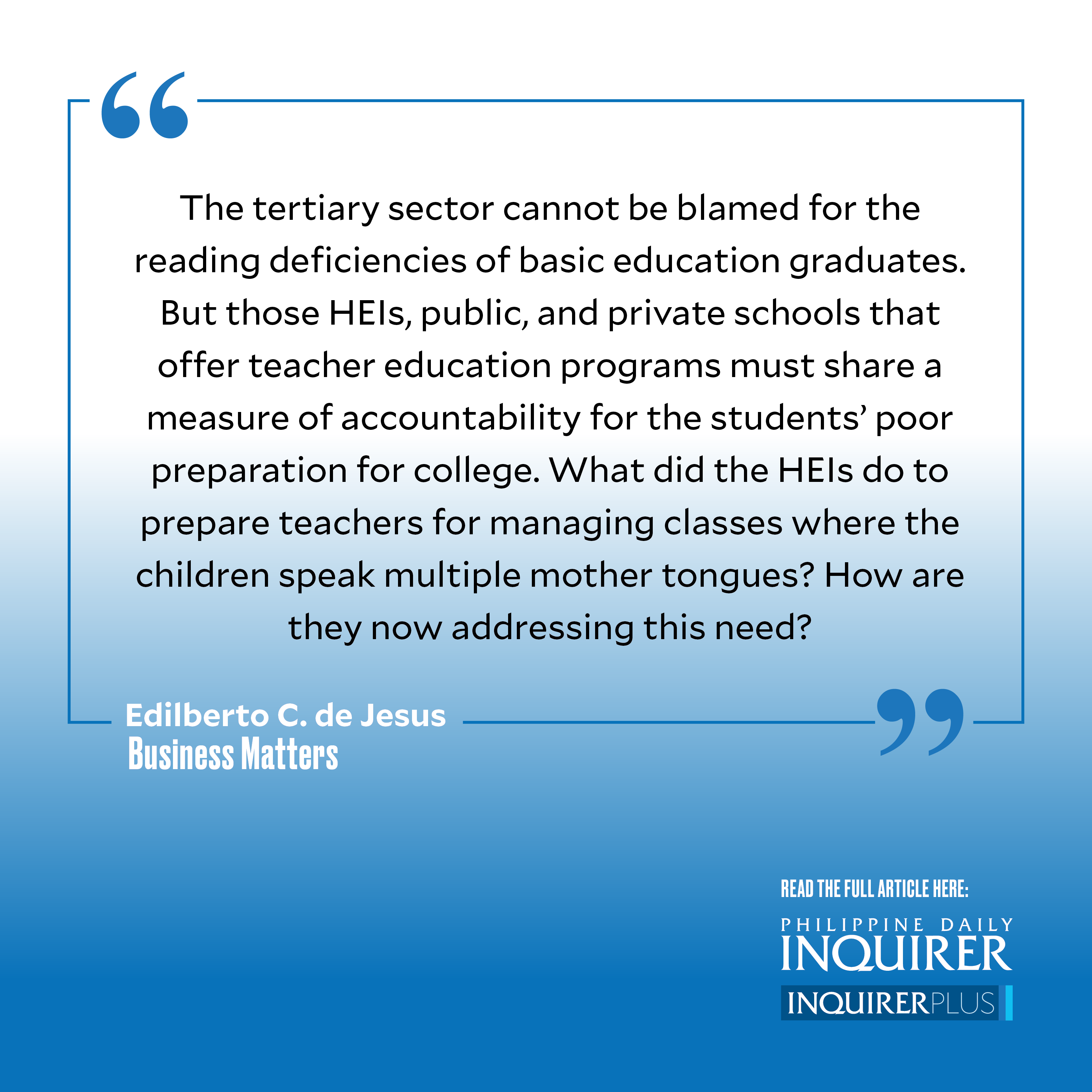Higher education challenges

Shifting the burden of mandatory Reserve Officers’ Training Corps courses from senior high school to college students overlooks the challenges that higher education institutions (HEIs) already face. They are still capable of producing graduates who can compete for advanced degrees or jobs abroad. For foreign students unable to find seats in their own schools in Asia and Africa, they remain an acceptable option. But international assessment tests and ranking tables confirm that they have lost the regional prominence they enjoyed in the ’30s.
Other governments have made sustained and systematic efforts to strengthen their national educational systems. In the late 20th century, European powers and the countries they colonized abandoned their monopoly on education and gradually permitted private sector access to the industry to accommodate the mass demand for college credentials.
The United States provided the model for the “massification” of higher education, recognized as a key driving force of its global economic competitiveness and for the policy that made massification possible—the participation of the private sector in education. Even Communist China allowed private institutions to operate schools, while also deploying its budgetary resources to invest in expanding training beyond basic education, explicitly aiming for top-tier global university rankings.
American colonial policy allowed private sector dominance of Philippine higher education, which covered about 80 percent of the enrollment till the ’80s. But the private school sector was not strong enough to meet the market demand for higher education credentials. Dealing with an already privatized system, the government responded by establishing more government HEIs. Broader access was the priority goal, with quality accepted as requiring more time to achieve.
The national budget process, however, rarely guaranteed sustained funding for the new, nationally funded state universities and colleges, or those later established by local government units to ensure both access and quality. The failure also compromised the goal of equity that aimed to ensure comparable educational opportunities for all students.
“Governmentalizing” higher education weakened private HEIs, which could not compete with the lower fees charged by state and local universities and colleges. Prescribed policy prohibited them from offering courses already offered in the common catchment area by private schools. But it was politically problematic to compel students to pay more in private schools for lower-cost courses the public schools could offer. Government policy and practice, thus, made it difficult for the private sector to pursue cutting-edge, 21st-century education issues to which the leading HEIs aspire.
The much-publicized, upstream problems of basic education have distracted attention away from their impact on the tertiary sector. Transitioning from K-to-10 to what had become the global standard of K-to-12 was a Department of Education (DepEd) program. But the 80-year delay in making the shift imposed a bigger problem for the tertiary sector; colleges and universities had to compensate for the two-year learning deficit of their freshmen students. Its flawed implementation also exacerbated the plight of the private schools, many of which had to bear the existential threat of drastically reduced tuition income over a five-year period.
Similarly, assuring grade-level reading proficiency of basic education students was and remains a DepEd responsibility. But the HEIs pay the price for the DepEd failure. Years before the World Bank research revealed the extent of the country’s learning poverty, provincial schools had to cope with K-to-10 graduates beginning college with Grade 5 English reading proficiency. Dealing with students’ low absorptive capacity deepened the frustration of faculty, for whose advanced training the HEIs had invested.
Education experts believe that children who do not already speak the prescribed languages of instruction in mother tongue face severe difficulties learning in those languages. Language diversity severely complicates the task of teaching literacy in English or Filipino to children in K-to-3 classes. The poor proficiency of entering students in handling the official languages of learning probably lies beyond the capacity of the existing DepEd system to resolve.
The tertiary sector cannot be blamed for the reading deficiencies of basic education graduates. But those HEIs, public, and private schools that offer teacher education programs must share a measure of accountability for the students’ poor preparation for college. What did the HEIs do to prepare teachers for managing classes where the children speak multiple mother tongues? How are they now addressing this need?
——————
Edilberto C. de Jesus is professor emeritus at the Asian Institute of Management.
——————
Business Matters is a project of the Makati Business Club ([email protected]).
###—###
#ColumnName
















